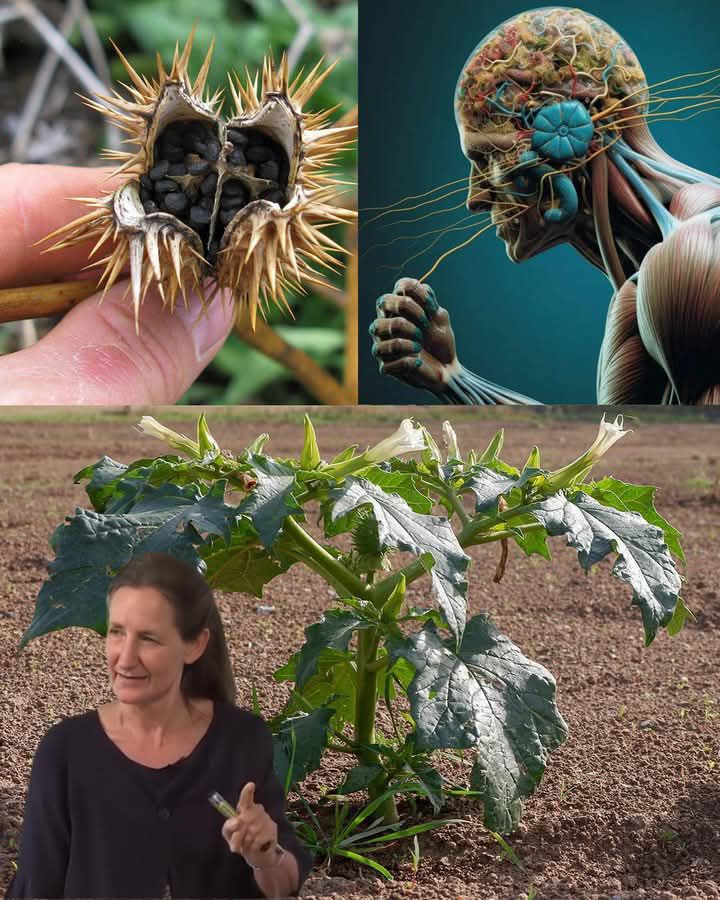ADVERTISEMENT
### **6. What Makes This Plant Dangerous? The Chemical Culprits**
The toxicity of this plant stems from the various harmful compounds it contains. One of the main culprits is **alkaloids**, a group of naturally occurring chemicals found in many plants. These alkaloids, when ingested or absorbed by the body, can interfere with normal bodily functions, affecting everything from the nervous system to the digestive and cardiovascular systems.
Some species of the plant also contain **saponins**, which can damage cell membranes and cause a range of symptoms. In addition, certain varieties of the plant produce **glycosides**, compounds that can have serious effects on the heart, leading to arrhythmias or even cardiac arrest if consumed in large quantities.
The plant’s toxicity can vary depending on the season and its growing conditions. For instance, some parts of the plant may be more toxic during certain stages of growth, such as when the flowers are in bloom or when the plant is particularly mature.
—
### **7. Famous Incidents and Tragic Stories**
Over the years, there have been several tragic incidents of poisoning caused by this plant, with both humans and animals affected. Many of these incidents could have been avoided if the individuals had known the risks associated with the plant.
One such example involved a group of hikers who unknowingly consumed a small portion of the plant while trekking through a remote area. Within hours, they began experiencing symptoms of poisoning. Fortunately, they sought medical attention immediately, and the poisoning was treated, though it could have easily turned fatal if they had delayed their response.
There have also been incidents of pets, particularly dogs, ingesting the plant while playing in gardens or forests. In these cases, the owners were often unaware of the danger, as the plant is so commonly found in the wild.
—
### **8. How to Identify the Plant and Stay Safe**
To avoid the risks associated with this dangerous plant, it’s important to be able to identify it correctly. Here are some key features to look out for:
– **Appearance**: The plant typically has large, broad leaves and vibrant flowers that may come in shades of purple, white, or yellow.
– **Flowers**: Depending on the species, the flowers may be tubular or bell-shaped, often clustered together.
– **Height**: The plant can grow quite tall, sometimes reaching up to six feet in height, making it easy to spot in fields and gardens.
– **Location**: The plant tends to thrive in disturbed environments such as roadsides, forests, or urban gardens, where soil is rich and the plant can spread easily.
If you suspect you have come into contact with this plant, wash your hands thoroughly and seek medical advice if any symptoms of poisoning occur.
—
### **9. Handling the Plant: Precautionary Measures**
If you must work around this plant, here are some precautions to take:
– **Wear gloves**: Always wear gloves when handling the plant to avoid direct skin contact.
– **Keep pets and children away**: Make sure pets and children don’t have access to areas where the plant grows.
– **Educate yourself**: Learn about the plant’s characteristics and make sure to avoid planting it in areas where people or pets might come into contact with it.
– **Dispose of the plant safely**: If you need to remove the plant, make sure to dispose of it properly by placing it in a sealed bag and taking it to the trash. Never compost it, as it could continue to spread.
—
### **10. The Role of This Plant in Ecosystems**
Despite its dangers, this plant does play a role in local ecosystems. It provides habitat and food for certain animals, and its flowers attract pollinators. However, because of its invasive nature, it can displace native plants and alter the balance of local ecosystems, leading to reduced biodiversity.
—
### **11. A Cautionary Tale: Growing Awareness and Education**
Raising awareness about the risks associated with this plant is essential for preventing poisoning incidents. By educating the public on how to identify the plant and the dangers it poses, we can prevent future tragedies.
—
### **12. Conclusion: Beauty and Danger in the Natural World**
Nature is filled with fascinating, beautiful plants, many of which carry hidden dangers. The stunning plant discussed in this article is a prime example of this duality. Though it grows everywhere and often goes unnoticed, its toxic properties serve as a reminder that beauty in nature can sometimes hide a darker reality. Awareness and caution are key when it comes to protecting yourself, your loved ones, and your pets from the dangers of this ubiquitous plant.
ADVERTISEMENT
ADVERTISEMENT
